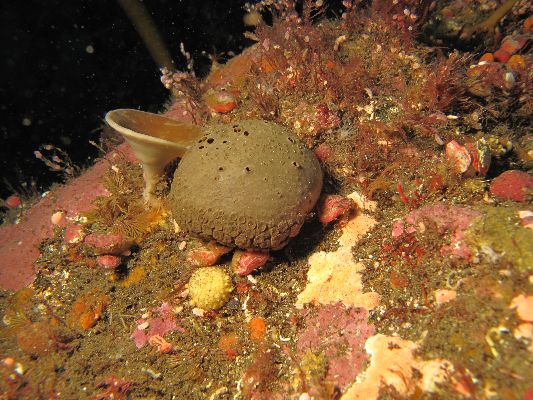Discovery Of Over A Dozen New Sponge Species
A study of New Zealand and Antarctic marine sponges has revealed 15 species that are new to science.
In the latest NIWA Biodiversity Memoir, researchers examined and registered over 250 sponge specimens in the family Latrunculiidae, discovering 14 new species and 1 new fossil species.

Sponges are a key habitat-forming animal in New Zealand’s marine environment, providing food, shelter, and a surface for other marine life to grow from.
They are also known to possess anti-cancer and anti-viral effects, with recent FDA-approved drugs derived from sponges being shown to reduce certain cancers.
Marine biologist Dr Carina Sim-Smith said that the Biodiversity Memoir provides fundamental knowledge on the status of our oceans.
"Ocean habitats are vulnerable to damage by human activities, so knowledge of sponge biodiversity is critical for understanding the function of seafloor ecosystems to help improve their management. If we don’t know what species live in our waters, how can we monitor the impacts that we are having?"
NIWA has been compiling Biodiversity Memoirs since the 1950s. They give a comprehensive, definitive, and illustrated description of New Zealand’s marine life, including animals such as sponges, corals, worms, molluscs, crustaceans, and sea stars.
They often take 4-5 years to complete because of the amount of detailed information they contain.
Dr Sim-Smith said that telling species apart is notoriously challenging due to the lack of detailed descriptions we have available.
"These Memoirs are indispensable for scientists and conservationists because they provide a record of the beautiful and unique biodiversity that’s found in our oceans, much of which is found nowhere else in the world.
"The fact that over 5% of the specimens we sampled were new to science shows that there’s still so much of our marine environment that we know nothing about. What else is left to be unearthed, and what could be under threat or go extinct without us ever knowing they existed?"
Latrunculiidae sponges inhabit a wide range of environments. From the coasts of New Zealand to the icy waters of Antarctica, they can be seen when diving on shallow reefs as well as at depths of over 2,500 m.
The new NIWA Biodiversity Memoir was compiled by Carina Sim-Smith (ClearSight Consultants) and Michelle Kelly (NIWA), along with co-authors Diana Macpherson (NIWA), Dorte Janussen (Senckenberg Research Institute and Nature Museum, Germany) and Pilar Ríos (Instituto Español de Oceanografía, Spain).
It is available for free download, and hard copies can be purchased on the NIWA website: https://niwa.co.nz/coasts-and-oceans/niwa-biodiversity-memoirs


 Retail NZ: Retailers Call For Flexibility On Easter Trading Hours
Retail NZ: Retailers Call For Flexibility On Easter Trading Hours WorkSafe NZ: Worker’s Six-Metre Fall Prompts Industry Call-Out
WorkSafe NZ: Worker’s Six-Metre Fall Prompts Industry Call-Out PSGR: Has MBIE Short-Circuited Good Process In Recent Government Reforms?
PSGR: Has MBIE Short-Circuited Good Process In Recent Government Reforms? The Reserve Bank of New Zealand: RBNZ’s Five Year Funding Agreement Published
The Reserve Bank of New Zealand: RBNZ’s Five Year Funding Agreement Published Lodg: Veteran Founders Disrupting Sole-Trader Accounting in NZ
Lodg: Veteran Founders Disrupting Sole-Trader Accounting in NZ New Zealand Airports Association: Airports Welcome Tourism Marketing Turbocharge
New Zealand Airports Association: Airports Welcome Tourism Marketing Turbocharge



